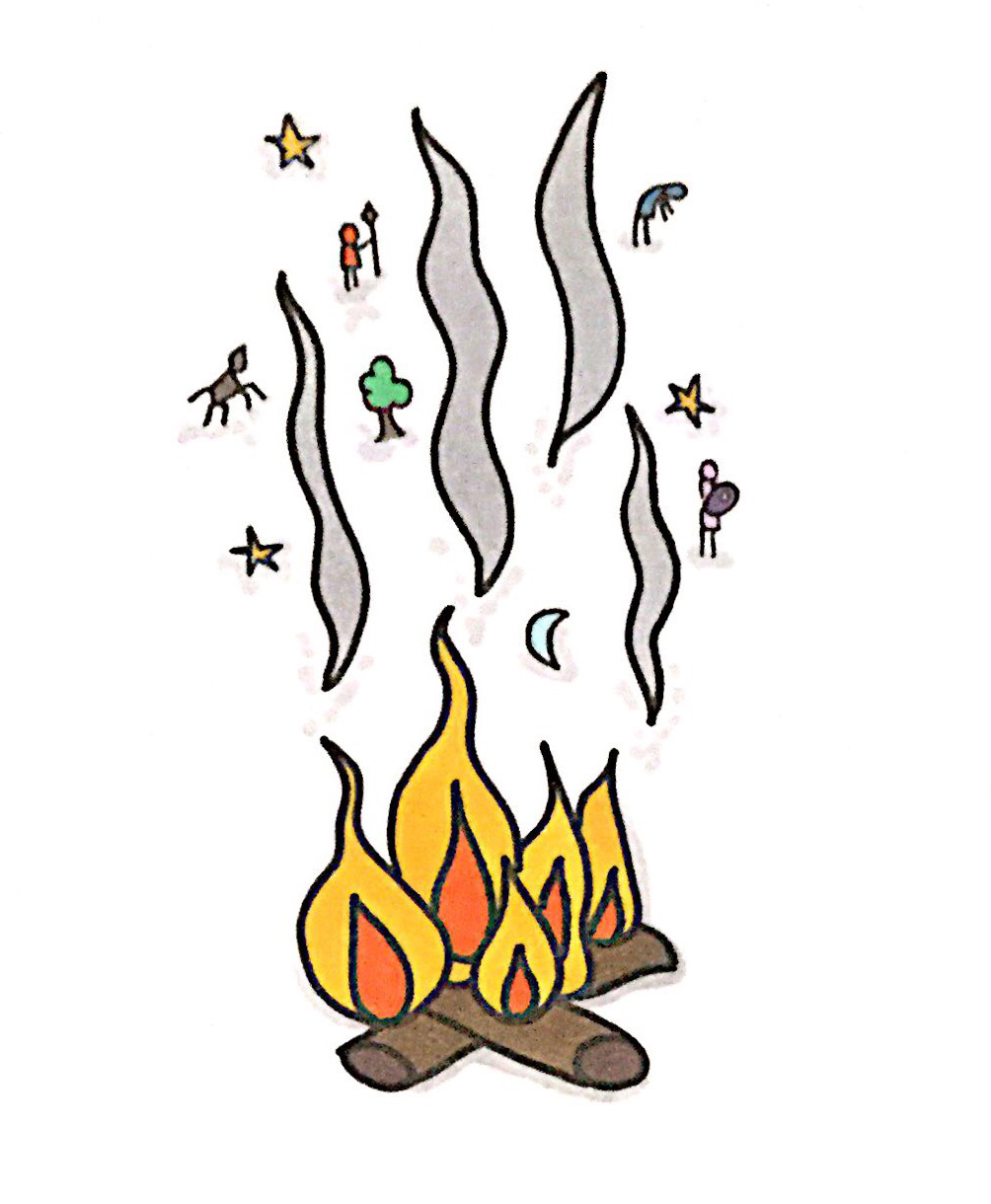 We each tell stories about ourselves, it is how we define ourselves and it is also how we understand those around us. We share our stories with others when we want them to know us, a practice we have been upholding as humans since we first sat around the campfire together. It’s the aggregation of all the little flashes of narrative that form the picture we keep of someone in our mind – flashes of their childhood, their career, embarrassing moments, things that moved them to tears. Story is like a magical recipe for connection. Herminia Ibarra and Kent Lineback from HBR explain that, “to know someone well is to know her story—the experiences that have shaped her, the trials and turning points that have tested her.”
We each tell stories about ourselves, it is how we define ourselves and it is also how we understand those around us. We share our stories with others when we want them to know us, a practice we have been upholding as humans since we first sat around the campfire together. It’s the aggregation of all the little flashes of narrative that form the picture we keep of someone in our mind – flashes of their childhood, their career, embarrassing moments, things that moved them to tears. Story is like a magical recipe for connection. Herminia Ibarra and Kent Lineback from HBR explain that, “to know someone well is to know her story—the experiences that have shaped her, the trials and turning points that have tested her.”
There’s something very centring and soothing about weaving together and sitting comfortably in your own story. While we are each the accumulation of every little moment and event that has made up our lives – how we select and braid certain threads together when we share it with others is something we can take deliberate choice over. You can choose your narrative. The narrative you tell yourself and the narrative you share with others. Bobby Umar explains it perfectly on Huffington Post, “Your story is the culmination of your entire experience both personal and professional. Within your life story, there are dozens of chapters. Within each chapter are nuggets of wisdom. You may not even know some of these insights because each person who hears your story may walk away learning a different lesson.”
While there are an infinite number of stories and combinations of narratives you could tell, there is something that the very best stories have in common. Stitched into their very fibre is a base of values. As Nick Morgan describes in Forbes, if you start with your values then the recipe for your narrative should come easily. “Are you all about hard work? Then you should be on a Quest. Are you proud of your resilience in the face of change? Then you’re a Stranger in a Strange Land. Is upward mobility, fame or fortune what you crave? Then you need to live a Rags to Riches story. Or are you focused on restoring justice and order to places or people that lack them? Then your story is one of Revenge.”
These story types that Nick is referring to come from what are now considered the seven archetypal story plots, first coined by Christopher Booker in his book “The Seven Basic Plots: Why We Tell Stories. Booker explains that these plots are so engrained, so fundamental to the way we tell stories that it is near impossible to break away from them.
In summary the seven plots are:
- Overcoming the Monster
The classic tale of good beating evil. There is a hero, and an obstacle or villain that must be overcome.
- Rags to Riches
This is the story of transformation, where the hero comes from humble beginnings to achieve greatness, overcoming much hardship along the way.
This is the long and hazardous journey that the hero embarks upon.
- Voyage and Return
Similar to the Quest, the voyage and return takes the hero far from home to another world before returning back home with all the lessons they have learnt.
- Comedy
As the name would suggest, the Comedy is a tale of humour. Often a series of unintended events, misunderstandings or accidents.
A tragedy is often a story of shock that ends in despair, death or misfortune.
A story of rebirth often sees the hero going to a dark place or being taken over by dark forces before finding their way back to the right path again.
While it may look like Booker has sucked the mystique out of the art of story by saying that in the end they all boil down to seven plots. In actual fact, no two stories are exactly the same. No one else on the planet has the exact same recipe of ingredients that you do. As Angel Chernoff describes, “There are over 7 billion people in this world and none are like you. You are unique. Your entire life journey including your upbringing, challenges, your hard learned lessons, your experiences, achievements and gifts, are all a series of footprints that have brought you to this very moment in time as you read these words.”
Thinking about that possibility gives me goose bumps. So, what is your story?
 Hit the subscribe button to receive a dose of visual storytelling inspiration each week!
Hit the subscribe button to receive a dose of visual storytelling inspiration each week!
Hayley Langsdorf
Chief Doodler @ Thoughts Drawn Out
Hayley is a visual facilitator, author, illustrator and designer with a deep love for all things visual storytelling.



